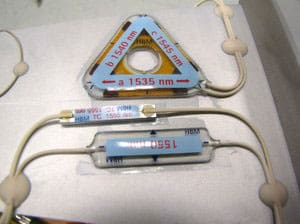[1] Henke, V. "Monitoring the Reichenbach and Albrechtsgraben viaducts"; RAM; Reports in applied measurement, No. 1/2007; pages 10-20, Darmstadt, 2007
[2] Liebig, J. P.; Menze, O.: "Keeping an eye on the effects of heavy goods traffic: long-term monitoring of a prestressed concrete bridge," HBM application report 10/2009, Darmstadt, 2009
[3] Gommola, G.; "Are our bridges safe? bridge monitoring with measurement technology from HBM," pp. 22-23; HBM customer magazine "hotline" issue 1/2012
[4] Germanischer Lloyd: Guideline for the Certification of Offshore Wind Turbines, 2005
[5] Steingröver, K.; et al. "Condition Monitoring Systems for Wind Turbines: Current status and outlook on future developments from the perspective of certification"; VDI report on "Vibrations in wind turbines," Bremen, 2010
[6] Steingröver, K.; et al. "CMS für Windenergieanlagen aus Sicht der Zertifizierer" [CMS for wind energy systems from the point of view of the certifier] "ECONOMIC ENGINEERING" Journal, issue 5/2012, Göller Publishing house, Baden-Baden
[7] Frieling, G.; Walther, F.: Tensile and fatigue properties of Fiber-Bragg-Grating (FBG) Sensors. In: Sensors & Transducers Journal 154 (2013), No. 7, p. 143-148
[8] Zerbst, S.; Knops, M.; Haase, K.-H.; Rolfes, R.: "Schadensfrüherkennung an Rotorblättern von Windkraftanlagen" [Early detection of damage on rotor blades of wind power plants], Lightweight Design issue 2010-04, Vieweg +Teubner, Wiesbaden
[9] Haase, K.-H.: Underwater application of strain gauges, UK Environmental, 2004.
[10] HBM/HBK Website, 2014. OptiMet by HBM
(jv)
* Dr. Karl-Heinz Haase, Product and Application Manager Optical Technology & Asset Monitoring; Dr. André Schäfer, Product and Application Manager Calibration/Wind Energy; Hottinger Baldwin Messtechnik GmbH
